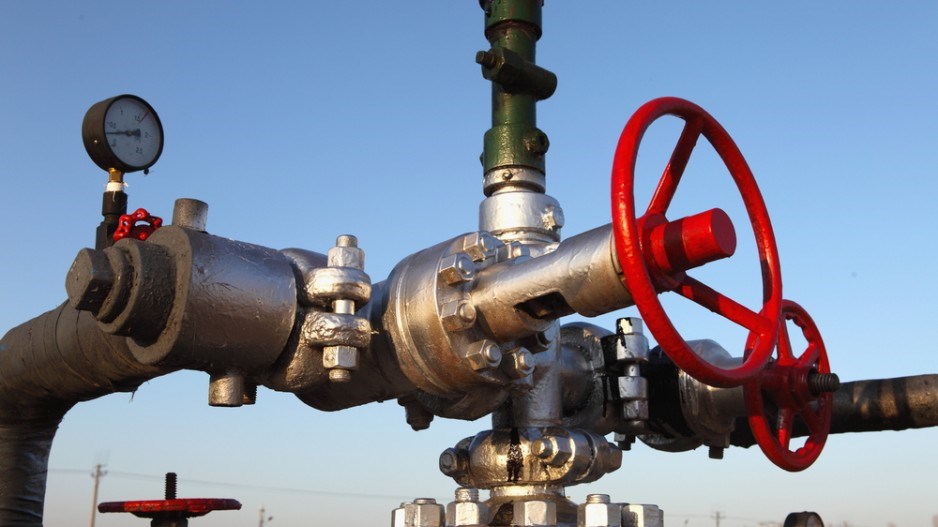Despite the changing global demands for natural gas, northern B.C.’s Montney region is still banking on significant growth for the new year.
“In 2017, all major companies are looking at accelerating budgets to be in the excess of $4 billion,” said Colin Griffith, executive director of the Northeast BC Resource Municipalities Coalition. “Major companies that have projects that will be finishing up in 2017 are big players like Seven Generations.”
Seven Generations Energy Ltd. (TSX:VII), a Grande Prairie-based energy company, plans to increase its Montney-area operations by approximately 50%, spending up to $1.6 billion in 2017 compared with between $1.05 billion and $1.1 billion in 2016. The increase will be invested in the operation of nine rigs drilling about 100 wells in the Montney area.
Tourmaline Oil Corp. (TSX:TOU), another key player in the area, is looking to expand on developmental properties recently acquired from Shell Canada with a spending average of $1.35 billion in capital in 2017. The company is upping its rig program to 17 from 12 and plans to drill 300 wells and complete a number of plant expansions.
The Gitxsan First Nation and TransCanada Corp. (TSX:TRP) have signed an agreement on the Prince Rupert Gas Transmission line that has added to the area’s much needed pipeline development. The $5 billion pipeline would supply Petronas’ proposed Pacific Northwest (PNW) liquefied natural gas export facility on Prince Rupert’s Lelu Island.
The International Energy Agency’s World Energy 2016 report forecasts that the annual growth in global natural gas demand to 2040 will be 1.5%; however, global markets, business models and pricing are all in flux, creating uncertainty for the Montney region and the gas sector as a whole.
“There has been a flood of gas and a downturn in the market for the prices being way down low, so the demand for liquefied natural gas around the world has slowed considerably,” said Dawson Creek Mayor Dale Bumstead.
In the last year, three processing facilities have been announced in the Montney area, collectively worth about $2.3 billion. Encana Corp. (TSX:ECA), Spectra Energy Corp. (NYSE:SE) and Crew Energy Inc. (TSX:CR) are all building processing plants to handle production of the Montney’s natural gas liquids (propane, butane, ethane), but the promise of LNG demand has slumped.
“In terms of where is Canada’s future growth in gas production, the Montney is a huge part of it,” said geoscientist David Hughes. “The price of gas in North America will likely go up, so selling gas to North American markets will be more attractive and LNG less attractive.”
According to an Alaska Highway News story, apartment vacancy rates in Dawson’s Creek and Fort St. John are the highest in B.C., sitting at 19.1% in October, which has been attributed to oversupply and low oil prices. Bumstead also admitted that the Montney region had developed so fast that building core infrastructure like water, sewer and roads will be a key concern moving into 2017.
Petronas’ continued delay in making a final investment decision on its PNW project has also raised concern that investors are getting cold feet in B.C.’s northeast.
But Bumstead remains confident that the Montney region will remain a pinnacle resource for the future of Canada’s gas sector.
"There has been a pause in excitement for all of it,” he said, “but the industry is positioning [itself] to be ready for when those final investment decisions are made.”




